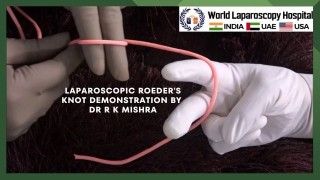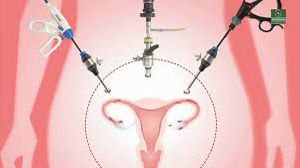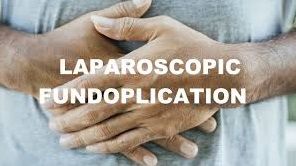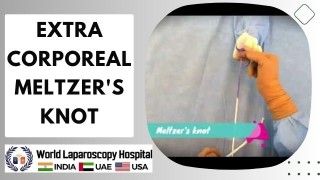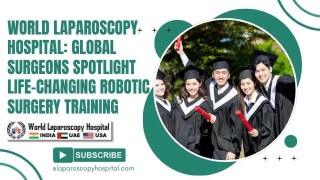Managing Torted Ovarian Dermoid Cyst in Pregnant Patients: A Multidisciplinary Approach
Add to
Share
1,360 views
Report
2 years ago
Description
Torted ovarian dermoid cysts in pregnant patients pose unique challenges that require a comprehensive and multidisciplinary approach. This in-depth exploration delves into the management strategies and considerations for effectively addressing this complex condition. Ovarian dermoid cysts, also known as mature cystic teratomas, are benign growths that can occasionally twist or become torsioned during pregnancy. This rare but potentially serious event requires prompt and specialized care to ensure the well-being of both the mother and the developing fetus. A multidisciplinary approach involving obstetricians, gynecologists, and surgical specialists is essential in managing torted ovarian dermoid cysts in pregnant patients. The first step is a thorough evaluation to accurately diagnose the condition and assess its impact on the pregnancy. Advanced imaging techniques, such as ultrasound and magnetic resonance imaging (MRI), aid in identifying the torsion and assessing its severity. The management strategy depends on several factors, including the gestational age, symptoms, size of the cyst, and overall maternal-fetal well-being. In cases where the torsion is mild and the patient is stable, conservative management with close monitoring may be an option. This involves pain management, rest, and regular ultrasound examinations to monitor the cyst and fetal development. However, if the torsion is severe or if the patient's condition deteriorates, surgical intervention may be necessary. The surgical approach typically involves a laparoscopic procedure, which offers the benefits of minimally invasive surgery, such as smaller incisions, reduced postoperative pain, and faster recovery. The surgeon carefully untwists the torted cyst, removes any necrotic tissue, and preserves as much ovarian tissue as possible to maintain fertility potential. Throughout the entire process, close collaboration between the obstetric team and the surgical specialists is crucial. Careful consideration must be given to the impact of surgical intervention on the pregnancy, including the timing of the surgery and the potential risks to the developing fetus. The obstetricians closely monitor the maternal and fetal well-being before, during, and after the surgical procedure to ensure optimal outcomes. Postoperative care involves continued monitoring of the patient and regular follow-up examinations to assess the cyst's resolution and ensure the ongoing well-being of the pregnancy. In some cases, a planned cesarean section may be recommended to minimize any potential risks associated with vaginal delivery. The management of torted ovarian dermoid cysts in pregnant patients requires a delicate balance between addressing the immediate surgical need and considering the impact on the pregnancy. The multidisciplinary approach ensures that the expertise of various specialists is utilized to optimize patient outcomes and minimize risks. With careful evaluation, timely intervention, and ongoing monitoring, this approach aims to protect the health of both the mother and the developing fetus. Torted ovarian dermoid cysts occurring in pregnant patients present unique clinical challenges that require a comprehensive and collaborative approach. This comprehensive exploration delves into the intricacies of managing this complex condition, highlighting the importance of a multidisciplinary team and individualized care. Torsion, or twisting, of an ovarian dermoid cyst during pregnancy is a rare but potentially serious event. It necessitates prompt evaluation and treatment to safeguard the well-being of both the expectant mother and the developing fetus. The multidisciplinary team, consisting of obstetricians, gynecologists, and surgical specialists, works together to ensure optimal management and outcomes. Accurate diagnosis and assessment of the condition are crucial. Advanced imaging techniques, including ultrasound and magnetic resonance imaging (MRI), aid in identifying the torsion and evaluating its impact on the pregnancy. The severity of the torsion, gestational age, symptoms, and overall maternal-fetal well-being guide the management strategy. In cases of mild torsion and stable maternal condition, conservative management with close monitoring may be appropriate. Pain management, rest, and regular ultrasound examinations are implemented to monitor the cyst and assess fetal development. However, severe torsion or deteriorating maternal condition may necessitate surgical intervention. Laparoscopic surgery, a minimally invasive approach, is often employed in cases requiring surgical intervention. This technique offers advantages such as smaller incisions, reduced postoperative pain, and quicker recovery. The surgical team carefully untwists the cyst, removes any necrotic tissue, and strives to preserve ovarian function to maintain fertility potential. Close collaboration between the obstetric and surgical teams is essential throughout the entire process. The impact of surgical intervention on the pregnancy, including timing and potential risks to the fetus, is carefully considered. Obstetricians closely monitor maternal and fetal well-being preoperatively, during the procedure, and in the postoperative period to ensure optimal outcomes. Postoperative care involves continued monitoring of the patient, with regular follow-up examinations to assess cyst resolution and monitor the ongoing well-being of the pregnancy. In certain cases, a planned cesarean section may be recommended to minimize potential risks associated with vaginal delivery. Managing torted ovarian dermoid cysts in pregnant patients necessitates a delicate balance between addressing the immediate surgical need and considering the impact on the pregnancy. The multidisciplinary approach ensures the expertise of various specialists is harnessed to optimize patient outcomes and minimize risks. Through careful evaluation, timely intervention, and ongoing monitoring, healthcare teams strive to protect the health of both the mother and the developing fetus. In summary, managing torted ovarian dermoid cysts in pregnant patients requires a multidisciplinary approach that integrates obstetric care, gynecological expertise, and surgical interventions. This collaborative approach underscores the significance of teamwork and personalized care in effectively managing this complex condition during pregnancy. By combining the knowledge and skills of different specialists, healthcare providers strive to navigate the challenges posed by torted ovarian dermoid cysts and promote positive outcomes for both mother and baby. Explore the complexities of managing torted ovarian dermoid cysts in pregnant patients through a comprehensive and collaborative approach. This in-depth exploration emphasizes the importance of a multidisciplinary team, including obstetricians, gynecologists, and surgical specialists, in providing individualized care and optimal outcomes. Discover the significance of accurate diagnosis and assessment using advanced imaging techniques, and the considerations involved in choosing between conservative management and surgical intervention based on the severity of torsion and maternal-fetal well-being. Gain insights into the benefits of laparoscopic surgery, a minimally invasive approach that aims to preserve ovarian function and fertility potential. The description also highlights the critical role of close collaboration between the obstetric and surgical teams throughout the process, ensuring the safety of both the expectant mother and the developing fetus. Postoperative care and follow-up examinations are emphasized to monitor cyst resolution and the ongoing well-being of the pregnancy. Overall, this description emphasizes the complexities of managing torted ovarian dermoid cysts during pregnancy and highlights the importance of a multidisciplinary approach in providing optimal care. In conclusion, managing torted ovarian dermoid cysts in pregnant patients demands a multidisciplinary approach that encompasses obstetric care, gynecological expertise, and surgical interventions. By combining the skills and knowledge of different specialists, healthcare teams can effectively address this complex condition while safeguarding the well-being of the mother and the developing fetus. This comprehensive approach highlights the importance of collaboration and individualized care in managing torted ovarian dermoid cysts during pregnancy.
Similar Videos

